Ed Burke
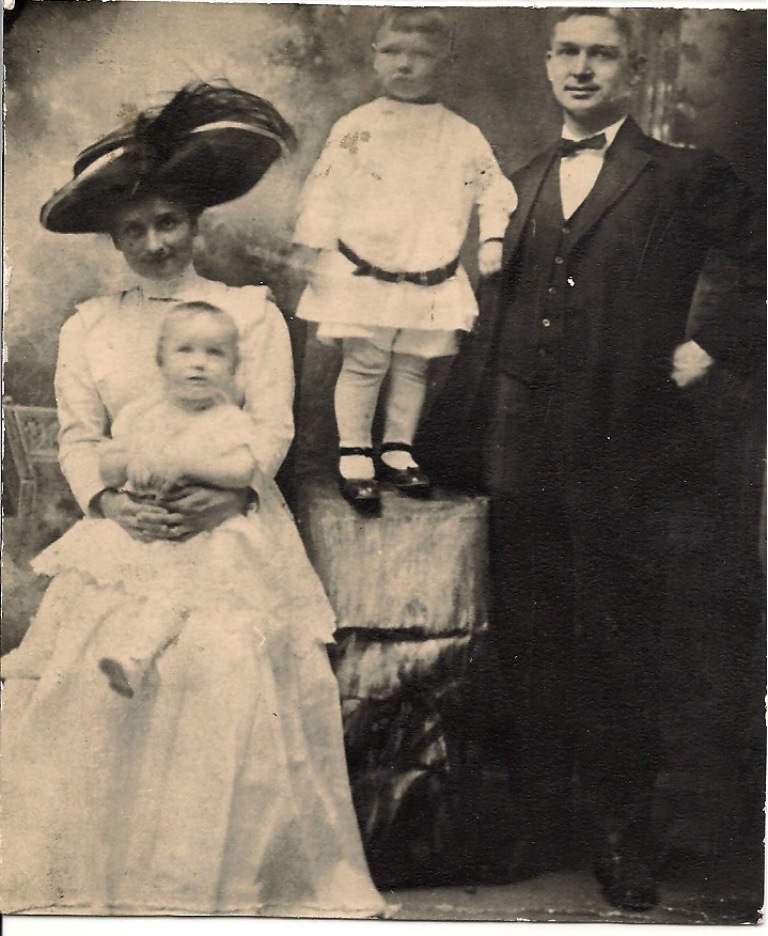
Born in 1907, Ed Burke grew up in the rich, hard coal country of northeast Pennsylvania at Larksville outside Wilkes-Barre, son of Edward J. Burke, who worked in the mines and as a streetcar conductor before landing work as an inspector for the Wilkes-Barre Railway. His mother, Bridget Conners Burke, was the daughter of Irish immigrants from England. (credit: Ed Gipple) 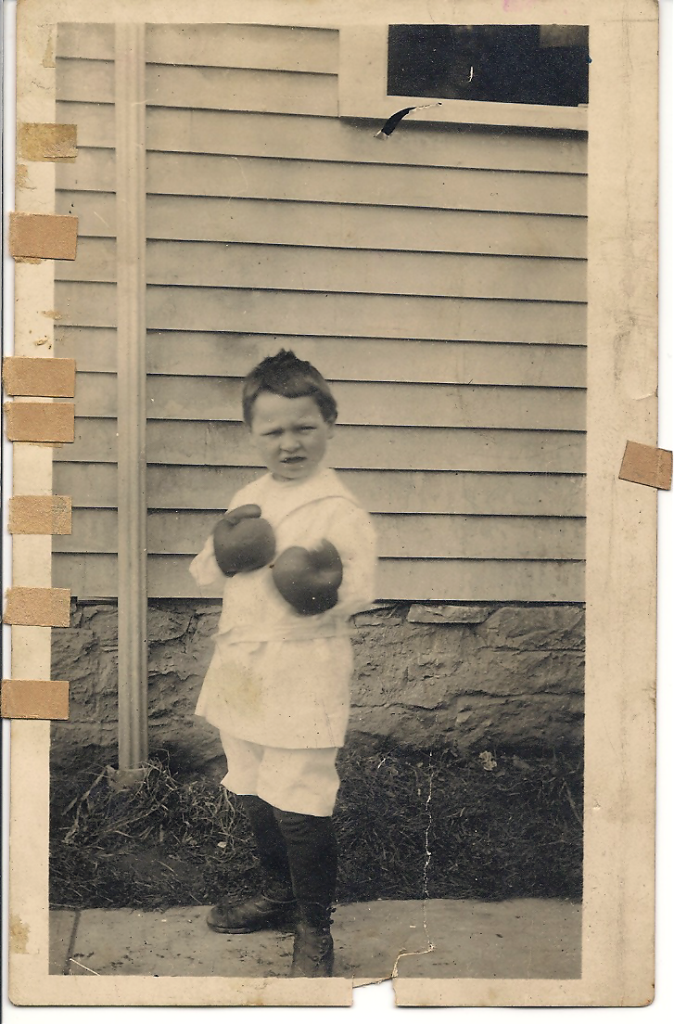
When Burke was at the Naval Academy, the renowned sportswriter Grantland Rice wrote of his youth this way: “Burke played with Larksville boys who were less fortunate, who worked underground. They were far from being gentle playmates and long before he was in high school Eddie was obliged to fight his own battles… And he always came out on top.” (credit: Ed Gipple) 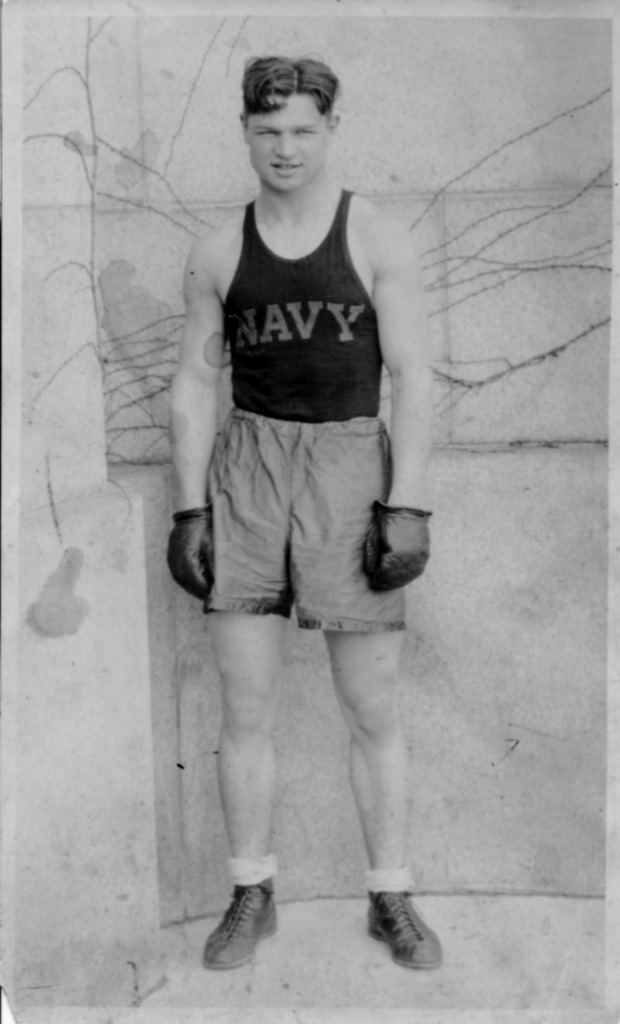
On St. Patrick’s Day in 1928, Eddie was at the Palestra in Philadelphia, vying for the light heavyweight title in the intercollegiate boxing championships. He lost in the finals to MIT’s Louis O’Malley. (credit: Ed Gipple) 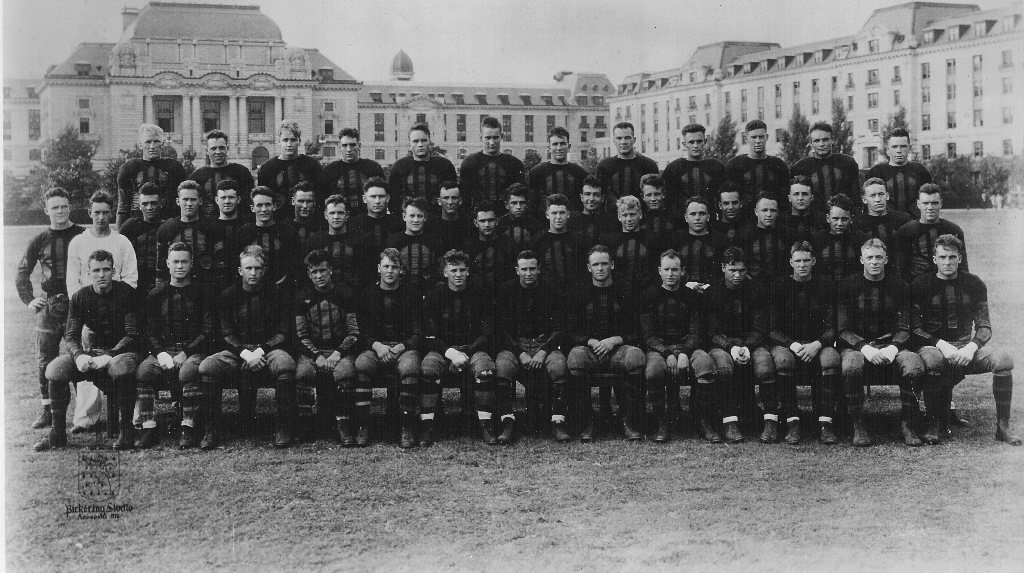
The Naval Academy’s football coach, Bill Ingram, lured Burke from the boxing gym to the gridiron. His squad went 9-0-1 during Burke’s plebe year and was recognized as national champion. Burke is in the first row, fourth from right. (credit: Ed Gipple) 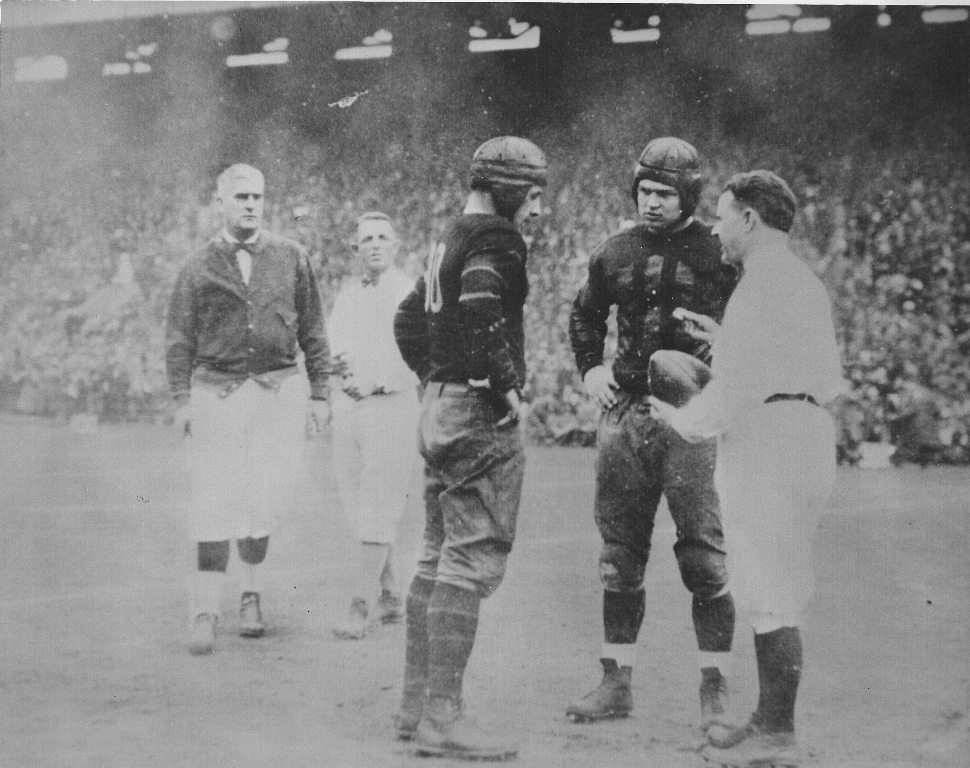
In his senior year at the U.S. Naval Academy in 1928-1929, Burke captained the Midshipman team that met Knute Rockne’s Ramblers before one of the largest sports crowds in history at Soldier Field. Here he’s staring down the Rambler captain. (credit: Ed Gipple) 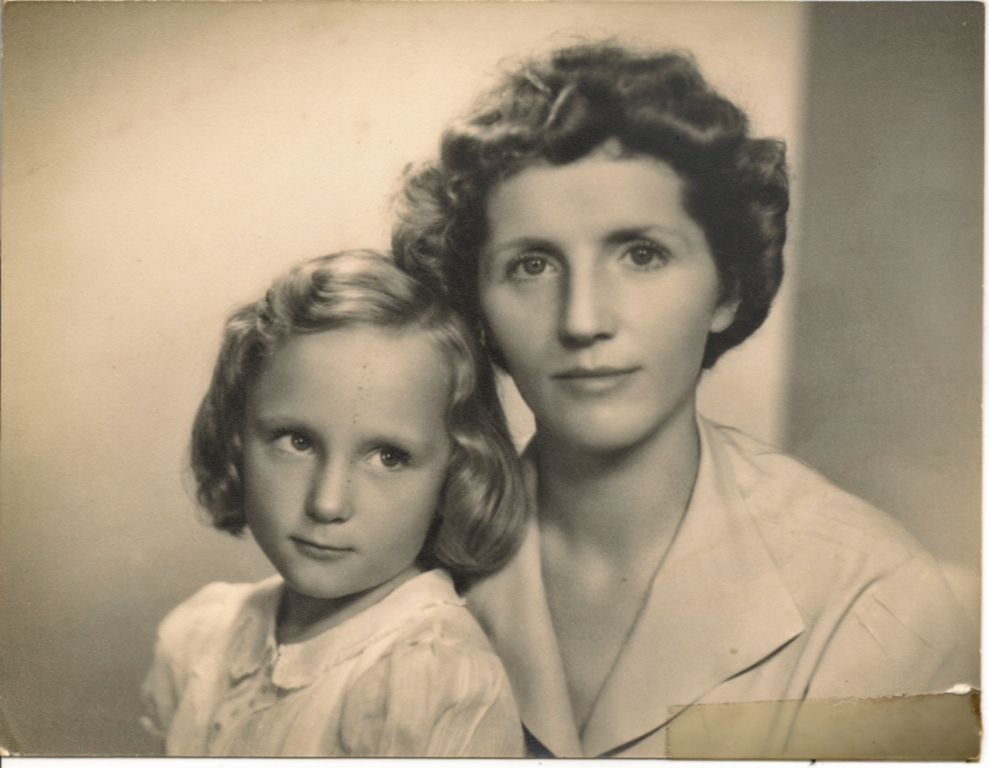
On Oct. 7, 1933, Burke married Adele Flanagan, from Wilkes Barre, PA in the Panama Canal Zone. They had one child, Patricia. (credit: Ed Gipple) 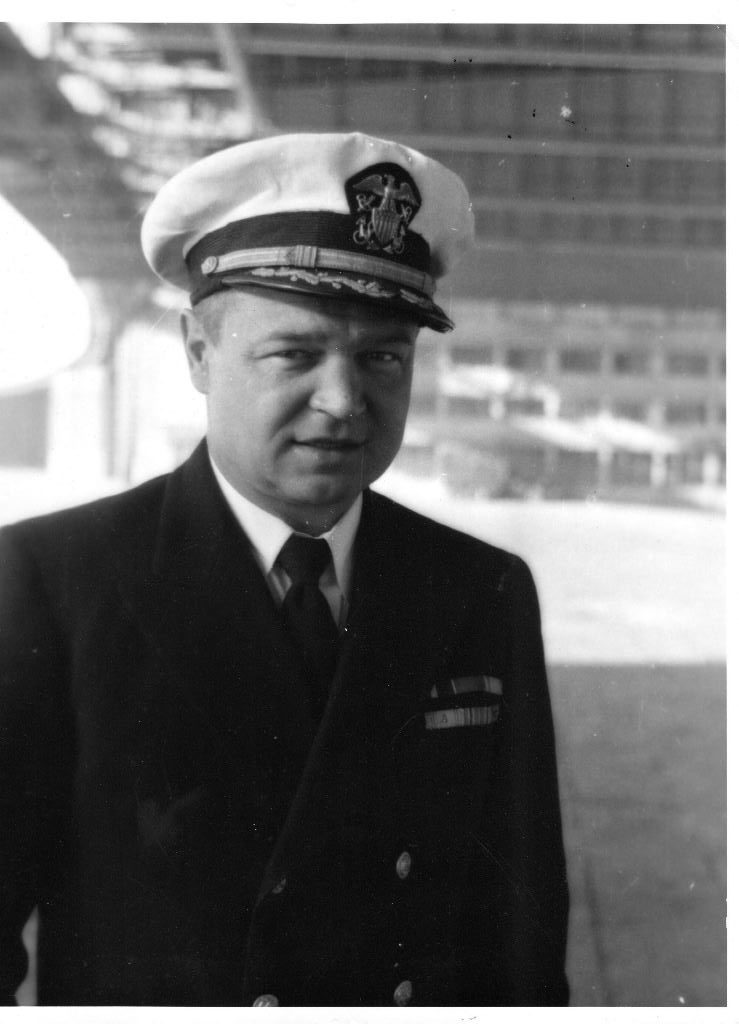
With his wife and daughter in tow, Burke spent two years in Asia in the late 1930s. When they returned to the States in 1940, he worked on the destroyers Ludlow and Simpson before getting command of Plunkett. 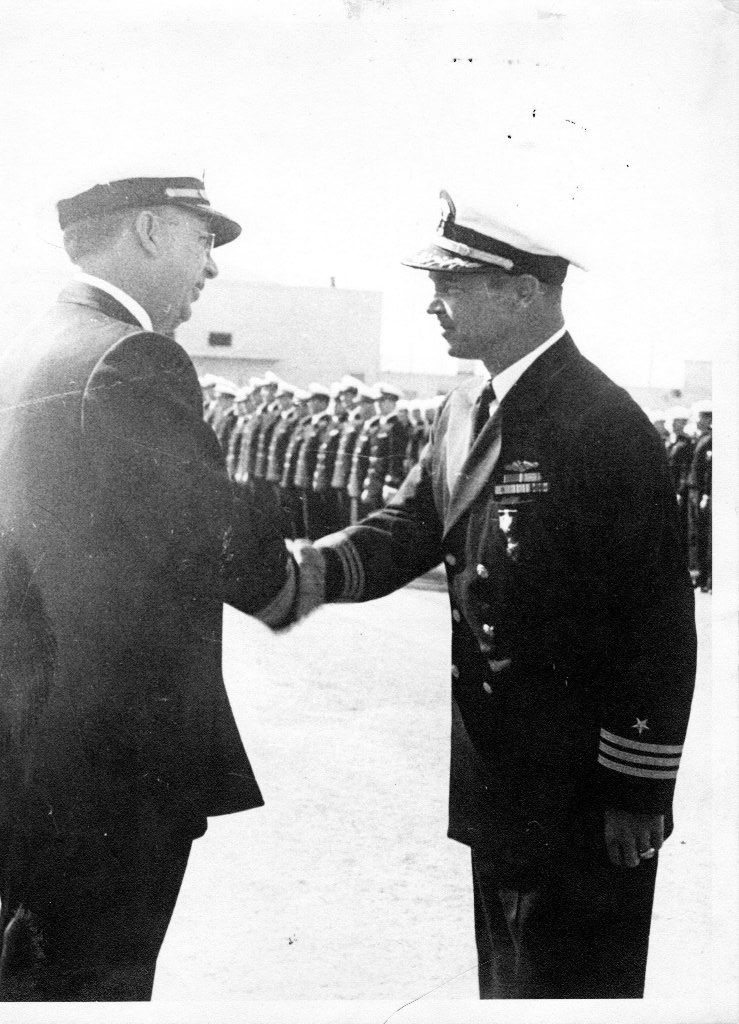
In June of 1944, in San Diego, Rear Admiral Francis C. Denebrink awarded Burke the Navy Cross for his actions at Anzio where he “maneuvered the ship with outstanding judgment and skill… and coolly and skillfully directed anti-aircraft fire with great accuracy and volume.” 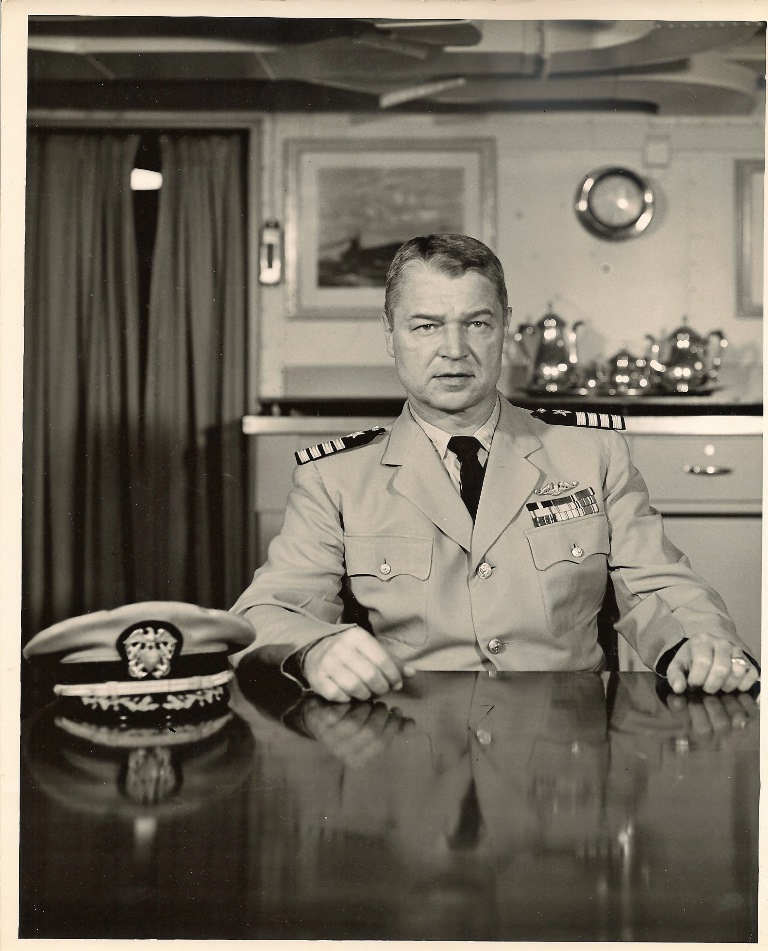
In the 1950s, Burke took command of one of the Navy’s heavy cruisers, the USS Des Moines (CA-134). If they gave you a cruiser, they were going to make you a rear admiral. 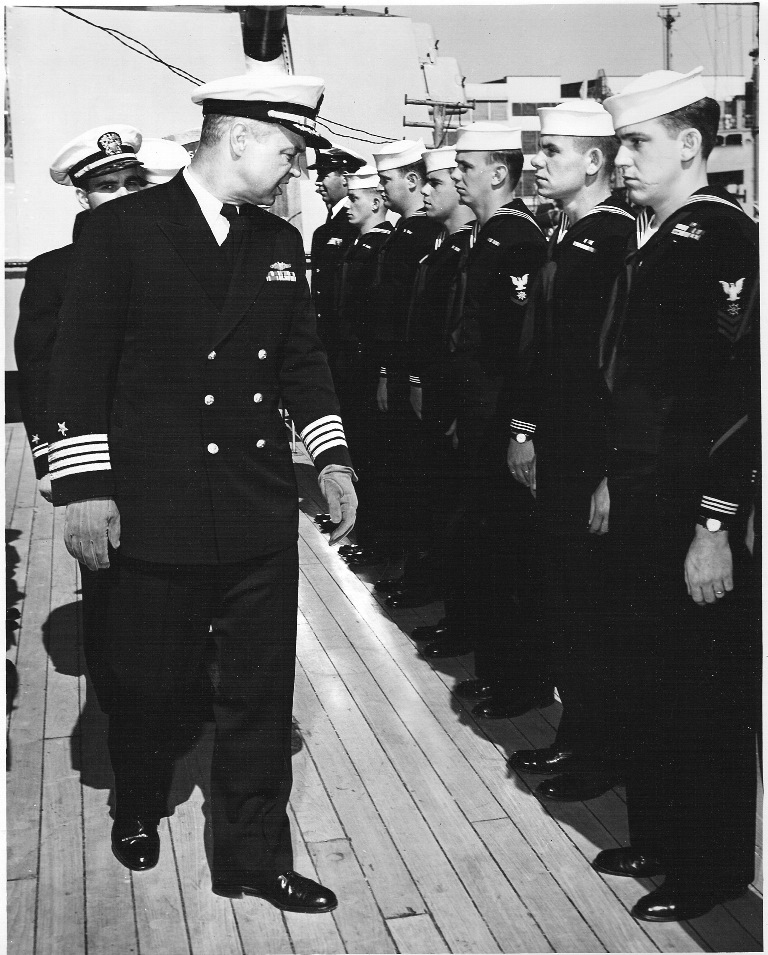
At a bar in Guantanamo Bay in the 1950s, when Burke on the Des Moines and Ken on the Cassin Young were conducting training exercises off Cuba, a fellow officer asked Ken if he were off the Des Moines, then answered the question himself: “You couldn’t be. You’re smiling.” 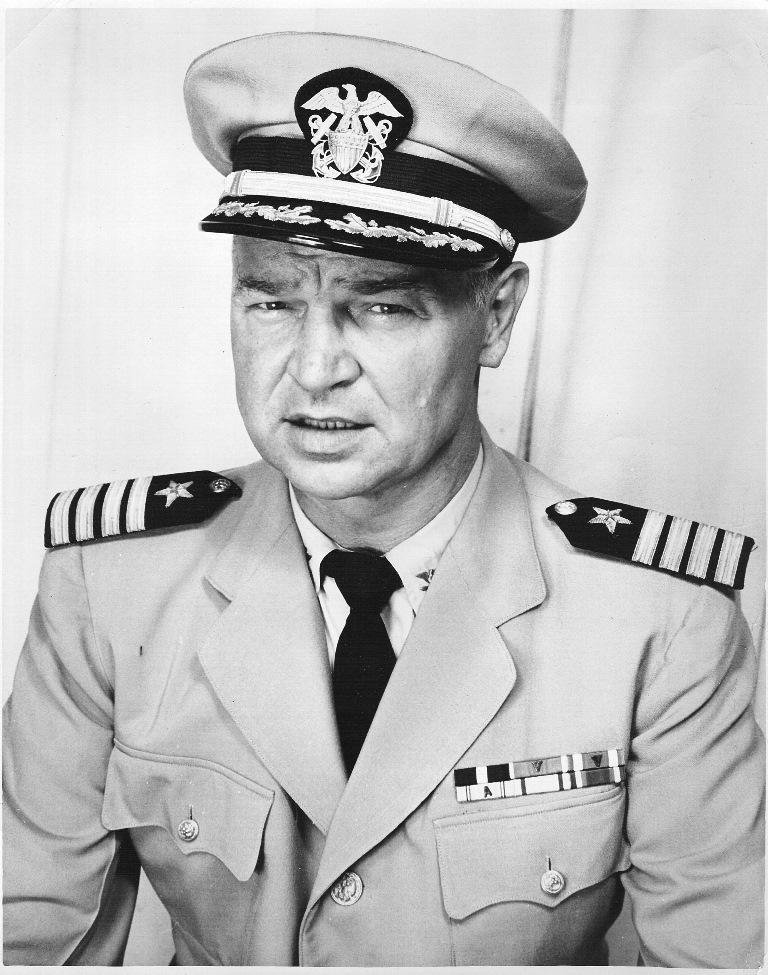
In Burke’s final fitness report in 1957, his commanding officer found him to be “a conscientious and capable officer who displays sound reasoning in arriving at decisions. He is strongly recommended for promotion.” Burke retired as a rear admiral.

